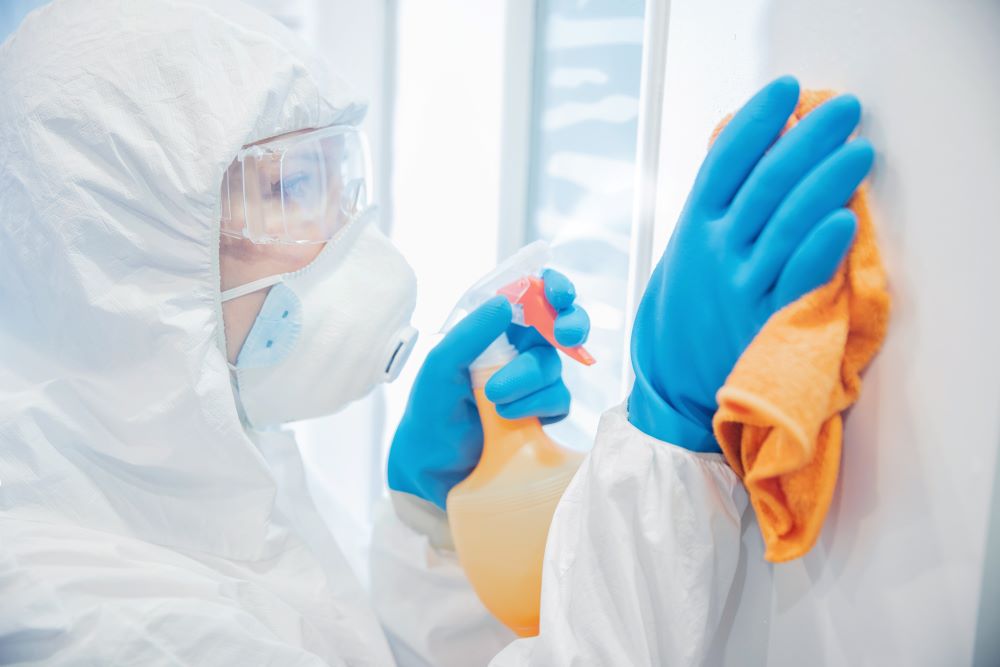
In an era where hygiene and disease prevention are critical, disinfection has become more than just a household chore—it is a cornerstone of public health and safety. Disinfection refers to the process of eliminating or reducing harmful microorganisms, including bacteria, viruses, and fungi, on surfaces, objects, and environments. From homes and offices to hospitals and public transportation, effective disinfection ensures a safer environment for everyone.
What is Disinfection?
Disinfection is the act of using chemical, physical, or combined methods to destroy or inactivate harmful microorganisms to safe levels. Unlike sterilization, which eradicates all microbial life, disinfection targets pathogens that pose health risks. Proper disinfection prevents the spread of infectious diseases and helps maintain hygiene in both personal and public spaces 除甲醛費用.
The Importance of Disinfection
Disinfection is essential in various sectors:
1. Protecting Public Health
Germs and pathogens can survive on surfaces for hours or even days. High-touch areas like door handles, elevator buttons, keyboards, and shared furniture can harbor infectious agents. Regular disinfection of these surfaces prevents the spread of diseases such as influenza, COVID-19, and hepatitis.
2. Healthcare Safety
Hospitals, clinics, and laboratories are environments with high infection risks. Disinfection of patient rooms, surgical instruments, medical devices, and equipment prevents hospital-acquired infections (HAIs), protecting patients, staff, and visitors.
3. Food Safety
In kitchens and food preparation areas, disinfection is crucial to prevent contamination. Pathogens such as Salmonella, E. coli, and Listeria can survive on cutting boards, utensils, and countertops. Proper disinfection practices ensure food safety and prevent outbreaks of foodborne illnesses.
4. Workplace and Public Spaces
Schools, offices, gyms, public transport, and other communal areas see high foot traffic. Routine disinfection in these environments reduces the risk of contagious diseases, creating a healthier and safer space for employees, students, and the general public.
Types of Disinfection
Disinfection methods can be broadly classified into chemical and physical techniques.
Chemical Disinfection
Chemical disinfectants are widely used due to their effectiveness and accessibility. Common examples include:
- Chlorine-based disinfectants: Effective against bacteria and viruses; commonly used for water treatment and surface cleaning.
- Alcohol-based disinfectants (ethanol, isopropyl alcohol): Ideal for cleaning hands, medical instruments, and surfaces.
- Quaternary ammonium compounds (Quats): Widely used in hospitals, food industries, and households.
- Hydrogen peroxide: Strong oxidizer used in medical and laboratory settings for disinfection.
- Phenolic compounds: Used in healthcare and industrial environments for broad-spectrum disinfection.
Advantages:
- Fast-acting and effective against many pathogens.
- Can be applied to multiple surfaces and environments.
- Easy to integrate into routine cleaning practices.
Limitations:
- May leave chemical residues.
- Reduced effectiveness if surfaces are dirty.
- Some chemicals may damage surfaces or pose health risks if misused.
Physical Disinfection
Physical methods destroy microorganisms without chemicals:
- Boiling: Kills most bacteria and viruses on small objects or water.
- Autoclaving: Uses pressurized steam to sterilize medical and laboratory instruments.
- Ultraviolet (UV) light: Damages microbial DNA, preventing replication; used in hospitals, water treatment, and air purification.
- Filtration: Removes microorganisms from air or water without chemical agents; commonly used in HVAC systems and water purification.
Advantages:
- No chemical residues, safe for the environment.
- Effective against resistant pathogens.
- Useful in sensitive environments such as laboratories and hospitals.
Limitations:
- Requires specialized equipment.
- May not cover large surface areas easily.
- Needs proper training and usage for maximum effectiveness.
Modern Disinfection Technologies
Technological advancements have improved disinfection practices, making them more efficient and effective:
1. Automated UV-C Disinfection
UV-C robots and lamps are now used in hospitals, offices, and public spaces to disinfect large areas quickly. UV-C light damages microbial DNA, making it impossible for pathogens to replicate. Automated systems reduce human error and ensure consistent disinfection.
2. Electrostatic Sprayers and Foggers
These devices apply disinfectants evenly on surfaces by charging liquid droplets. This technology is ideal for large spaces such as classrooms, offices, gyms, and public transport vehicles. Electrostatic sprayers ensure complete coverage and faster disinfection.
3. Antimicrobial Coatings
Surfaces can be coated with long-lasting antimicrobial solutions that inhibit microbial growth. These coatings are used on high-touch surfaces in hospitals, schools, and public transportation to provide ongoing protection.
4. Eco-Friendly Disinfectants
Environmentally safe disinfectants, including biodegradable chemicals and plant-based solutions, are increasingly used to reduce chemical pollution while maintaining effectiveness against pathogens.
Best Practices for Effective Disinfection
To ensure proper disinfection:
- Select Appropriate Disinfectants: Use chemicals or physical methods suited to the surface and pathogen type.
- Clean Surfaces First: Dirt and organic matter reduce disinfectant effectiveness.
- Follow Instructions Carefully: Pay attention to dilution, contact time, and application method.
- Wear Protective Equipment: Gloves, masks, and eyewear protect users during chemical disinfection.
- Regular Schedule: High-touch areas should be disinfected consistently.
- Proper Storage and Disposal: Store disinfectants safely and dispose of them responsibly to avoid environmental contamination.
Disinfection in Response to COVID-19
The COVID-19 pandemic highlighted the importance of effective disinfection. Offices, schools, hospitals, and public spaces implemented rigorous disinfection protocols. Alcohol-based hand sanitizers, chlorine-based solutions, and UV-C systems were widely adopted to reduce virus spread. The pandemic emphasized that routine disinfection is vital for public health.
Environmental Considerations
While disinfection is necessary, it should not harm the environment. Excessive use of harsh chemical disinfectants can pollute water, soil, and air. Combining eco-friendly disinfectants with physical methods like UV light or filtration can maintain hygiene while minimizing environmental impact.
Conclusion
Disinfection is a fundamental practice for health, hygiene, and safety. By understanding chemical and physical methods, modern technologies, and best practices, individuals and organizations can protect themselves and others from harmful microorganisms.
From traditional cleaning and chemical disinfectants to advanced UV-C robots and electrostatic sprayers, modern disinfection practices are more effective than ever. Regular disinfection of homes, workplaces, hospitals, and public areas reduces disease transmission, creates safer environments, and promotes overall well-being.
In today’s health-conscious society, disinfection is not optional—it is a necessity. By implementing consistent and effective disinfection strategies, we can safeguard lives, protect public health, and contribute to a cleaner, safer, and healthier world.